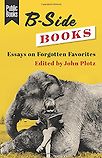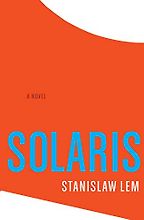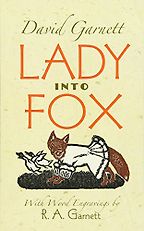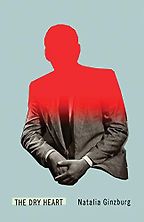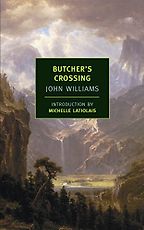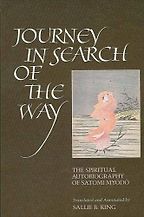I love your concept of the ‘B-side book’. Could you explain to our readers what a B-side book is, firstly, and how you’ve come to collect them?
So the whole project arose out of a three- or four-year editing gig I’ve had at the journal Public Books. I’d been writing short articles for them about forgotten books, and they said something like: ‘Wouldn’t it be nice to turn this into a regular feature? You could ask people you know and admire to write these things.’ I jumped at the idea, and it’s been three years of total joy, curating this.
We had the name before we defined and constrained the category. Originally the thought was that B-side books would be, well… If I said to you Villette, would you know what I mean? In other words, yes, a novel by Charlotte Bronte, but not the Charlotte Bronte novel. So originally, we thought it would be the flip side book by famous writers.
Yep, got it.
But when I started talking to writers I admired, it was more often the case that people had in mind something more like Procul Harum’s ‘Whiter Shade of Pale’—the one-hit wonders. You know: forgotten people who had written just that one really amazing book.
So we understand ‘B-side book’ now as a category of books that have had their moment in the sun some time in the past, and then were flung to the side. You would find them at a beach house, or in the Salvation Army for a nickel. But you pick them up and realize that there was a moment when people really loved this book. And wouldn’t it be wonderful if that life could be revived now?
I guess the deeper, sort of philosophical answer is that it’s related to the idea that Walter Benjamin had—that sometimes the past flashes up to us in the present, in a moment of danger. A book that has been forgotten for half a century might come alive again.
I love that. You’ve edited a new collection of these essays under the title B-Side Books: Essays on Forgotten Favourites. Shall we talk about the first of the lesser-known classic books that you want to recommend? This is Solaris, by Stanisław Lem.
Yes, it’s a great example. It’s a Polish science fiction novel from the post-war era, and it’s about the notion of a sentient planet—a version of the Gaia hypothesis. In our current era of the Anthropocene and climate change, there’s a sense that we need to rethink the boundaries between the human and inhuman. So in one way this book is more alive now than it has been at any time since 1961.
That’s another thing about B-side books—it’s not that they always ought to have been A-sides. It’s more that now, in 2021, we should be thinking about them in a fresh way.
I’m reading Solaris right now. It has all the ingredients of a thriller—I mean, the opening scene unfolds like a horror movie, it accelerates from nought to sixty in a moment. But it also forces the reader to consider what it means to ‘live’ and to ‘think’.
Yes, as you say, it asks big questions. Can a sea be conscious? What happens if other planets abide by different laws of physics?
The writer who selected Solaris for B-Side Books is a wonderful Americanist named Kate Marshall. She’s interested in speculative fiction, generally, but also in categories of the weird. Her case for Solaris, which I 100% agree with, is that it’s not just that Lem is interested in the notion that the laws of physics might be different on another planet, but the idea that the planet can connect—telepathically or psychically— with human beings, who come to understand it through some kind of dream-experience.
I think Lem’s fixation—I’ve read a lot of Lem, I really love him—is that we humans struggle more than we admit to comprehend a vast universe that is much more complicated than we think. No matter where we go, we’re going to bring our own human cognition, our conceptual apparatus with us. In Solaris, the intelligent sea and the scientists—Solaris and the “Solarists”—meet in this dreamspace, a kind of imagined bridge. It’s shaped by the channel of communication, the human ability to dream, but it’s a genuine encounter with the other.
“It’s not that these books always ought to have been A-sides. It’s more that now, in 2021, we should be thinking about them in a fresh way”
It’s an amazing book. Kate even connects it to the current post-humanist environmentalism. I really like the thought experiment in her piece; she says that this should be a model for us as we try to think about the ethics of responsibility towards our own planet. Our ethical obligation is not just to other human beings, it’s to everything.
That’s interesting. It makes me think of panpsychism, a movement that has been growing in strength, partly because it offers some kind of answer to the mind-body problem, and certain problems of quantum physics. I guess, as in so many cases, we find that our biggest ideas have been tossed around by science fiction writers well in advance.
Yes, I agree with that. And, you know, Lem and people like Kurt Vonnegut were writing in the shadow of World War Two. Both Lem and Vonnegut suffered personal trauma: Vonnegut was in Dresden when it was firebombed. People who survived the atomic conflagration of World War Two had a new apprehension of the human capacity for destruction that took a long time to trickle out into the culture at large. But science fiction was there in the 1950s and 1960s. I mean, I’m writing a book about Ursula Le Guin right now, and I do find that those mid-century writers have taken on board not only the nuclear threat but the gargantuan hyper-agency of humans after World War Two, and they are grappling with it.
The second B-side book you want to recommend is not a work of science fiction, but it is a work of fantasy of a kind. This is Lady Into Fox by David Garnett.
I was hoping you would make that connection. Maud Ellmann wrote about this book for us, and made the brilliant comparison that it was published within a few years of Kafka’s Metamorphosis; in some ways you can think of it as another metamorphosis story.
It is about a man who marries a woman named Sylvia Fox. One day, while they are out walking, she turns into a fox—this happens in a deadpan, magical realism way. Garnett takes seriously the idea that she might have become a fox, but also takes seriously the idea that the protagonist might just have made this up—that he has a random fox that he believes is his wife.
There she is with him in any event. He reads Clarissa to her, but she’s too busy staring at the birdcage in the corner to really listen.
Five Books interviews are expensive to produce. If you're enjoying this interview, please support us by donating a small amount.
I guess, in a way, it has something in common with Ovid’s Metamorphoses, in that it takes seriously the notion that the boundary between the human and the non-human might not be as thick as we think. Then, let’s follow the path… What would it mean to bring a fox into your human life? And to try to have it come into the parlour with you and talk to guests? The original is illustrated with amazing woodcuts, which are in the recent edition too. I love that this book has come back into public view. He also wrote a book called Man in the Zoo, which is about, well, a man who is in the zoo, next to the gorilla.
David Garnett was one of those writers, like Sylvia Townsend Warner, rotating on the margins of the Bloomsbury set. He’s the son of the translator Constance Garnett. So he grew up in this world of Joseph Conrad hanging around the breakfast table, that kind of thing.
I think it’s very typical of writing between the wars, in that it is at once in a very comfortable, staid, bourgeois domestic space—the married couple, the utterly respectable suburban country home that readers would recognise instantaneously—and then the absolute bizarreness. Does the formerly human vixen want to go visit her relatives in the woods? Maybe we’ll go for a walk and see if she can meet a gentleman fox? It’s as if something out of Grimm has come into ordinary life.
I think you could read it as meaning that there’s something alienated and strange about our ordinary life. Like, we want to treat our bourgeois domesticity as if it’s inevitable and natural and the only way to be on Earth, but this is a reminder that the other, that cosmic strangeness lurks everywhere.
Yes. I heard about this book in 2013 when Sarah Hall won The Sunday Times Short Story Award for a story called ‘Mrs Fox’, which was sort of roughly based on the same concept. I think if readers enjoy Lady Into Fox, they’ll also really enjoy ‘Mrs Fox’.
That’s a great connection. I agree. Actually, I would say that it’s a bit surprising to me that Man in the Zoo hasn’t had a similar coming-back-to-life, just because it also treats human beings as animals among other animals. It’s a wonderful idea. But that book does very strange things with race which are a little hard to pin down, and definitely make you uncomfortable. That may explain it. It’s a little like Huckleberry Finn: great, but people are freaked out by it.
Let’s move onto your third B-side book. I wasn’t familiar with this book at all, but I’m desperate to read it now that I’ve read Merve Emre’s recommendation: this is The Dry Heart by Natalia Ginzburg.
Yes. I haven’t read a ton by Ginzburg, but my mother—who is teaching herself Italian in retirement—keeps raving about her, keeps calling me up to read me sentences in Italian from Natalia Ginzburg’s memoirs. Ginzburg is from an intensely literary family; her son is the historian Carlo Ginzburg, author of The Cheese and the Worms.
I think Merve really puts her finger on what’s amazing about The Dry Heart: it’s a novella that helps you understand why a certain kind of emotionally intense reckoning, especially from the position of female disempowerment, might fit better into a novella format than a novel. The Dry Heart is short, focused, cyclical and repetitive. It’s the story of a woman who, you learn in the first paragraph of the novella, has killed her husband because she cannot take him any more. It circles around the moment when she shoots him, and backs into it from a number of different ways.
Merve, in her essay, circles around the question: When should a woman kill her husband? And, when I interviewed her for a podcast, she said, ‘well, of course, it all arose out of my own impulse: doesn’t everyone want to kill them?’
Ha!
Merve also makes the point that if it was from the husband, Alberto’s, point of view, it would be five volumes long and called Alberto’s Way. But because it’s the wife’s story, not the husband’s, it’s just so sharp, and incisive, and sits inside this little space.
She really puts her finger on the way that Ginzburg can just sit in an emotional state and follow it. You might compare her to, like, Rilke or Andre Breton’s Nadja, these novels that are really are in someone’s mind. You’re there for so long, you can’t figure out what’s in the mind, and what’s the world being described. Except the thing that makes this novella is that, you know, she really did kill her husband. That’s the punctum that tears through and holds you.
The logical comparison might be Elena Ferrante, but of course Ferrante chooses the path of maximalism, while all of Ginzburg’s books are pretty short.
That’s a feature of the books on this list as well. Many are novellas, or at least what you might call ‘slim volumes’. Do you think that’s why they stand out, why they’ve proven so memorable to your writers? Their punch?
Yes, I think it’s two things: they are memorable, but it’s also easier for a short book to slip in and out of people’s attention. With big books, they either thud down or they stick around. Little books… people can be tremendously impressed by them, but … I don’t know. Maybe it’s the difference between a good lunch and a good dinner. They have a contained arc.
Before we move on, I just want to pause for a moment on Ginzburg herself, who lived a remarkable life. She grew up in an intellectual Jewish family and married a prominent anti-Fascist and freedom fighter—who was later tortured to death in prison—and was an activist herself. I know she won major prizes for her fiction, but you mentioned she wrote memoir too?
Yes, I’ve actually read a bit—a series of essays, actually. Merve was raving about them. Family Lexicon. Based on what I’ve read, she’s incredibly good at capturing the essence of sensibility in a kind of impersonal way. Even in those essays, which are meant to be personal essays, there’s not a lot of revealing personal detail. It’s more like she resonates with place, the family setting. I would compare it to Bassani’s The Garden of the Finzi-Continis. I don’t know if you’ve read the Ferrara novels—but it’s a Jewish family in Ferrara just before the war, and Garden (the novel and then the Vosconit film too) is incredibly good at rendering the feel of that space and time, just before everything is about to change: history is about to wipe this whole world off the map. But the novel doesn’t admit that this is happening until the very end.
I feel like Ginzburg and Bassani share a sensibility: there’s an inner life, and then beyond that there’s the larger historical waves moving through that inner life. But it doesn’t mean that the inner life doesn’t have its own internal logic as well.
Fantastic. Well, B-side book number four is John Williams’ Butcher’s Crossing, another slim and powerful work. Could you talk us through it?
Sure. So my essay about this book was what that kicked off the series. So I’m very attached to it.
John Williams is famous for Stoner, a grim academic novel. It’s really touching. It’s like, if Thomas Hardy’s Jude the Obscure actually went to college and got a PhD, and it seemed like everything would be alright… but because he’s Jude, it’s not. Stoner is that book. It’s the way in which you come out of poverty and straitened circumstances, academia might seem to offer a salvation for you, but actually the same forces that control you are still there.
How would I compare that to Butcher’s Crossing? Butcher’s Crossing is a Western in that it’s about a buffalo hunt. A young man from Boston shows up in the last town in Kansas, and says he wants to go hunt buffalo. Since it dates from 1960, you might think of it as the world of late Zane Grey—a time when people are making a lot of great Westerns still, the High Noon era.
But it’s an anti-Western. The point of the novel is that the very things you do that you think are going to make you a man, that are going to bring you into this wonderful, new, transcendent Emersonian relationship with nature… well you’re just killing buffalo. You’re killing them and killing them and killing them. At some point you realise that the glory is the obscenity. It’s a wonderful instance of what it means to be a settler-colonialist.
“There’s this wonderful idea in philosophy of the impossibility of the ‘view from nowhere’. But one of the things I love about fiction is the notion of a view from elsewhere”
Butcher’s Crossing is set in the post-Civil War period, so the late 19th century, it’s meant to be the glory days of the West, what Hollywood makes so many movies about. But they are just killing machines, out to slaughter buffalo after buffalo. In the 1870s, there was a craze for buffalo robes centred in London. In an international world, everyone was eager to have a buffalo robe. But the central characters get snowed in, and by the time they get back to Kansas the buffalo craze is over and the hides are totally worthless. They’ve left these carcasses out on the prairie for nothing, and all they have is a pile of furs that they’ll be lucky if someone turns into sofas or something.
Nonetheless, it is a beautiful account of the West. John Williams himself had moved out to Colorado a little bit before he wrote this and it conveys the beauty of winter in the Rockies in a way that is extremely moving. Yet the overall arc of the book is the grimness of the promise of American Manifest Destiny. It’s an auto-critique, fully embracing all the beauty of the things that people think are wonderful about the movement of white people west, yet very bitter and clear on the cost of all that.
Native Americans are only glimpsed at the edges, because they’ve already been displaced from this space. He imagines the end of those who are still there. Actually, there are tons of Native Americans who are still living in the Great Plains in the 21st century, but in John Williams, or through the eyes of his character, it’s almost like they don’t exist any more. Like they’ve been pushed to the edges. That blindness is part of the story.
This book makes me think of that iconic picture of the mountain of buffalo skulls in Michigan in the 1890s. A powerful symbol of the depredations of colonial capitalism. The scale of the killing was so brutal.
That’s a great way of thinking about it. The character that Andrews goes hunting with is named Miller, and really what he’s doing is milling these buffalo into a saleable commodity. What’s left of them is bones.
I recently read Larry McMurty’s Lonesome Dove. Have you read that?
No, I’m embarrassed that I never have.
In some ways, it’s a kind of odyssey: these guys going from Texas to Montana. And it has a similar quality, because they meet a guy crouched by an enormous pyramid of buffalo bones—basically the guardian of the bone pyramid. It’s another book that reads as a kind of elegiac late Western, but there’s another, darker element—that this is not something we should be nostalgic about. And that this is the capitalism that we still live in. This is what it does, what it turns into.
I think that might bring us to our final book: Myōdō Satomi’s Journey in Search of the Way. I loved what Theo Davis had to say about it for B-Side Books: “as spiritual autobiographies go, Journey in Search of the Way is a bit of a romp.”
I’m so glad to go from the darkness of Butcher’s Crossing to Journey in Search of the Way. Myōdō is writing about her practice in ways that I, as a non-Buddhist, non-practicing person, can connect to so intimately. There’s a wonderful distinction that Myodo makes: Christianity tells her that you have to see the rottenness of the wood you are made of so that you can purge it and move on. But she says, no, I actually want to accept the rottenness of my wood, because I’m rotten wood, and we’re all rotten wood. So where do we go from there?
She’s wonderfully frank about her own life: the sexual indiscretions and terrible things that have happened to her. She describes things that shouldn’t happen to anyone, but also choices that she has made, which are not, you know, the choices of someone who was always going to be a nun. She goes in many different directions, and that becomes the material for her life. She’s not trying to perfect herself by rising above it.
I mentioned that I’m a huge fan of Ursula Le Guin. The path for Le Guin went through Taoism, not Buddhism, and I’m not subtle enough to know the theological differences. But in Le Guin, there’s this sense that what Taoism teaches you to do is not exactly Stoicism, but it shares with Stoicism a notion of just accepting the world, accepting the things that happened to you, and not trying to overturn or re-narrate them, but simply to understand them. Myōdō does a wonderful job of that.
It’s a perfect example of what B-Side Books can do. I couldn’t have gotten to what’s great about the book without Theo herself, who is more intimately bound up with that kind of Buddhist practice. Once she showed it to me, I thought: oh, right. I can get something out of this book without feeling like I have to be a Buddhist.
Absolutely. It sounds very much like the kind of spiritual and personal writing that is popular today: the message of accepting our past. You also think this is a good moment for Journey in Search of the Way to find a new audience?
I’m a little hesitant because I don’t know the history of religious and therapeutic writing. And Myōdō herself is, I think, cautious that the book is not intended to be therapeutic. It’s intended to be, like, available for reflection. She’s telling her story, and if her story resonates then… yeah.
But there’s a whole history of Buddhist thought and how it entered the West. It’s been entering since, you know, Thoreau and Emerson, who were reading Buddhist stuff. So it’s come in and gone away and come back again.
Maybe what you’re thinking of, and tell me if this is right, is that we’re moving beyond a model of trauma as a complete explanation for what it means to be. Like the account of trauma as status: if you have this traumatic wounding that almost functions as an identity, you’re trapped in that moment and can’t get beyond it. It’s not that we should disregard the effect of trauma in the world, but there needs to be other narratives that explain how people have terrible things happen to them in their lives, yet also find a way to narrate them. Is that what you’re talking about?
Not so much. I was just thinking of the proliferation of first person pieces, the ‘first person industrial complex’ as it’s been called: the way that the internet has encouraged people to be much more open and confessional about what has happened to them in their past, and how that has impacted them as individuals. #MeToo, I suppose, is an example of this. And writers like Cheryl Strayed: her hit memoir Wild was about heroin addiction and sexual abuse and infidelity, which she processed through writing at least as much as hiking. I think that type of confessional—the pursuit of peace through personal revelation—has become popular.
Maybe that relates to the point earlier that we were discussing about Ginzburg and the quality of impersonality that she brings into her first-person writing, but how the desire to kill one’s husband springs out—that you can share the subjectivity of the text, even if you personally haven’t done any of the things in it.
I’m less interested in that first-person industrial complex you’re describing than in the rise of autofiction with all its attendant complexities. I mean, people like Ferrante, Rachel Cusk, Sheila Heti… What they’re doing is exploring how you can make something that is fiction and true to your life at the same time. It has that sort of doubleness. I guess the analogy with Myōdō is that all these things so clearly happened to her, but she wants them also to exist in a theological, spiritual register.
Yes. Yes. I like that. Just to close our discussion, I wanted to ask you to speak a little generally on the importance of reading more adventurously. Why should we look to the back catalogue for our next book?
A great question. I’m sure I’m going to blow it. Okay, well, since I’m teaching George Eliot right now, I can answer it by way of: George Eliot has this wonderful description in Mill on the Floss where she stops in the middle and looks at the audience, and she says, ‘I realise the lives I’m describing to you are oppressively narrow, and you feel constrained by them, and it’s awful, but it’s necessary to feel oppressive narrowness.’ She doesn’t quite say it that way, but I think what she’s saying is that we feel oppressive narrowness because actually oppressive narrowness is everywhere. We’re all in our lanes.
The people that you often read about in novels—like the woman who murders her husband—are maybe in narrower lanes than you, but we’re all in some kind of constrained circumstance. Yet the realisation that other people are constrained in ways akin to how we are constrained is itself something that can lift you, and actually make you feel less constrained.
I feel like that’s a Myōdō insight: if you can conceive of that as a general condition, you’re able to see it in a different way. There’s this wonderful idea in philosophy of the impossibility of the “view from nowhere.” But one of the things I love about fiction is the notion of a view from elsewhere. And we don’t have to go as far as a sentient planet to get that elsewhere.
Interview by Cal Flyn, Deputy Editor
June 3, 2021. Updated: December 14, 2024
Five Books aims to keep its book recommendations and interviews up to date. If you are the interviewee and would like to update your choice of books (or even just what you say about them) please email us at [email protected]

